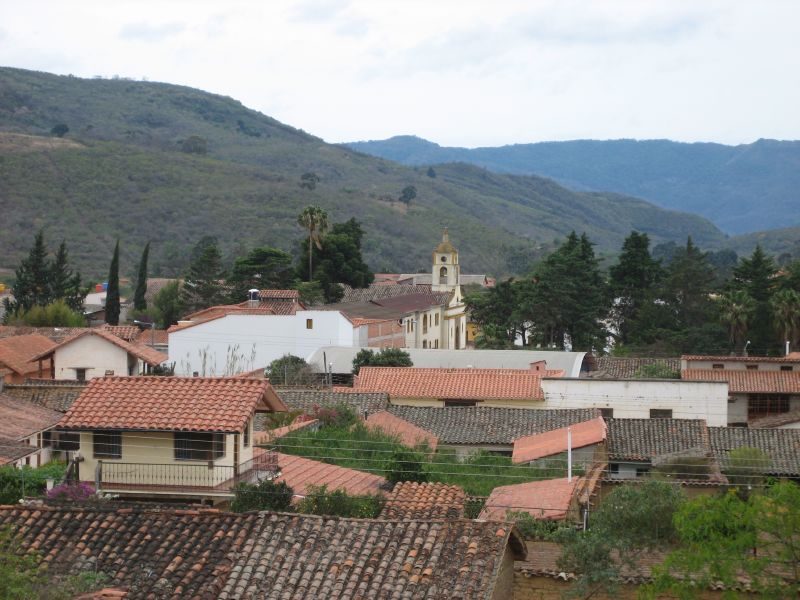Samaipata is one of the best kept secrets of the Bolivian low-lands. This little town two hours away from the city of Santa Cruz has become very popular in the last years among both national and international tourists due to its warm climate year-round, diversity of landscapes and restaurants, with an array of cultural and tourist activities to choose from. One of its main attractions is how close it is to the Samaipata Fort, a pre-colonial arqueological site where different cultures, such as the Chané and Inca come together, declared Heritage of Humanity by UNESCO. In this blog, we’ll tell you all about:
- What makes Samaipata an amazing tourist destination
- How to travel to Samaipata easily from any part of Bolivia
You can travel to Samaipata by bus easily from Bolivia’s main cities (Santa Cruz, Sucre, Cochabamba and La Paz) though mostly paved highways and different degrees of confort; from confortable lie-flat buses to shared cabs and vans. The prices vary, as well, and there is an option for every budget.

The most direct wat to travel to Samaipata from La Paz is to take a bus to Sucre, and from there, take another bus that leaves you in Samaipata. The buses from La Paz to Sucre leave every day from the Bus terminal of La Paz.
The trip from La Paz to Sucre takes between 10 and 12 hours, depending on wether the bus travels via Potosi or Ravelo (the trip via Ravelo is shorter). Either way, the buses leave at 19:30 and arrive in Sucre early the next morning at the Bus terminal of Sucre.
Once in Sucre, you can enjoy the city, its colonial architecture, places of interest and unique cuisine, until your bus leaves for Samaipata at 18:30.

Travel by bus from Sucre to Samaipata
The bus from Sucre to Samaipata leave at 18:30 and the trip takes around 10 hours, traveling through an almost completelly paved highway. The bus company that works this route is El Mexicano, a transportation company that has modern buses and certified drivers.
The buses from Sucre to Samaipata leave at 18:30 and arrive in Samaipata at 4:30 am. They park on Main Street, since the town does not have a proper bus terminal. The passengers can walk from there to the main square or to their hotel. The town is perfectly safe at all hours.

Travel by bus from Cochabamba to Samaipata
The most direct way to travel by bus from Cochabamba to Samaipata is to take a bus to Santa Cruz, traveling through the old highway which crosses Samaipata. These buses don’t leave from the Cochabamba Bus Terminal, but rather from the corner of 6 de Agosto St and República St.
Information about the trip:
- Departure: 7:30 am
- Duration: 11.5 horas
- Arrival: 19:00.
Another way of making this trip is to take a bus from Cochabamba to Santa Cruz and, from there, travel to Samaipata. The buses leave from the Bus Terminal of Cochabamba, located on the corner of Ayacucho and Tarata St. (see map).

Travel by bus from Santa Cruz to Samaipata
There are two options to travel by bus from Santa Cruz to Samaipata:
Option 1:
Shared cabs (5 passengers) with the company Expreso Samaipata. Cars leave from Omar Chavez Ortiz Av, #1147. The trip takes 2- hours and the price is 30 Bs per person.
Option 2:
Shared vans (minibuses), with the company Cooperativa de Transporte El Fuerte. The vans leave from Sgundo Anillo Av Grigota. The trip takes between 2 and 4 hours and the price is 30 Bs. per passenger.
Take into account that the cabs and vans wait to fill up before leaving, so there are no fixed departure times. The duration of the trip varies according to the state of the roads, and can take longer during rain season (November-February).

Tourist information about Samaipata
Located at 120 km southwest of Santa Cruz, Samaipata has an average temperature of 23 degrees and the town has a sunny climate most of the year. The town lies at 1650 m above sea level, and there are many tourist agencies that offer visits and tours for the following destinations:
- Amboro National Park. This is one of the most diverse national parks in Bolivia, with an impressive array of wildlife including jaguars, mears and pumas. The park is the home of more than 900 bird species. In order to visit, you must hire a tour, which can be arranged with one of the tour agencies in town. The cost is between 100 and 320 Bs, depending on the agency and group size.
- El Fuerte: The fort of Samaipata is an archeological site located on top of a mountain at 1950 meters above sea level. The site had ceremonial, religious, bellic and residencial uses during the Inca Empire and is the second most popular archeological site in Bolivia, after the Tihuanacu ruins. This enormous complez includes a square, places for the observation of stars, residencies and a gigantic engraved stone which bears religious figures and symbols. This site this site was pronounced Heritage of Humanity by UNESCO.

- The caves: Not actually caves, but a series of sascades in a beautiful area of exuberant nature and a cool natural pool surrounded by a white-sanded beach where you can spend the afternoon bathing, picking oranges, enjoying the view and hiking to the nearby mountain forests.
- Condors nest: The hike to Condors Nest takes all day; traveling by car, to the nearest point, then the spectacular hike up the mountain, which is considered an alternative to Colca Canion in Peru. The condors appear around mid day. It’s best to schedule this tour in clear/sky days, to increase chances of seeing condors.
We hope this information is useful so you can plan your trip by bus to Samaipata from any city in Bolivia. Have a nice trip!











